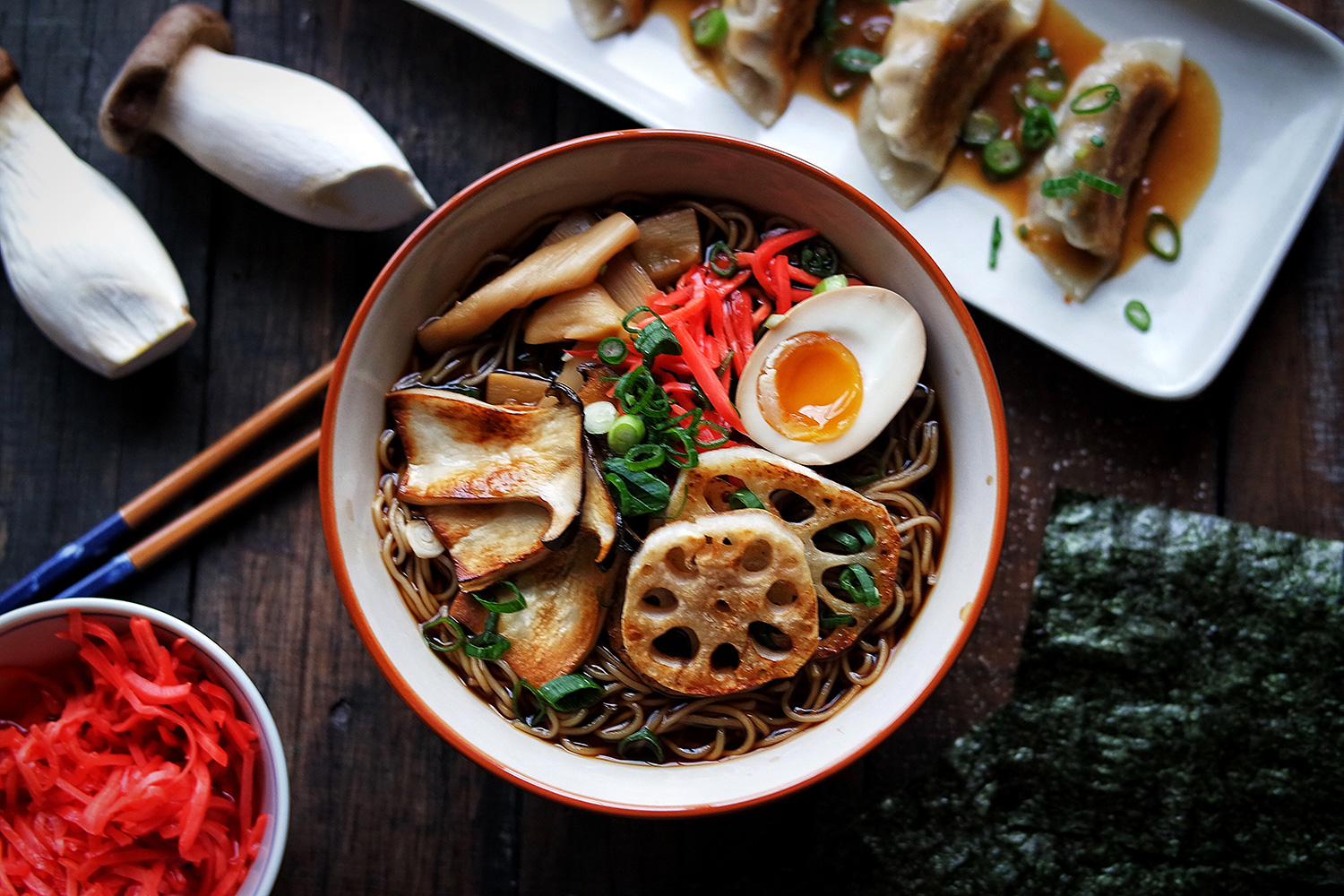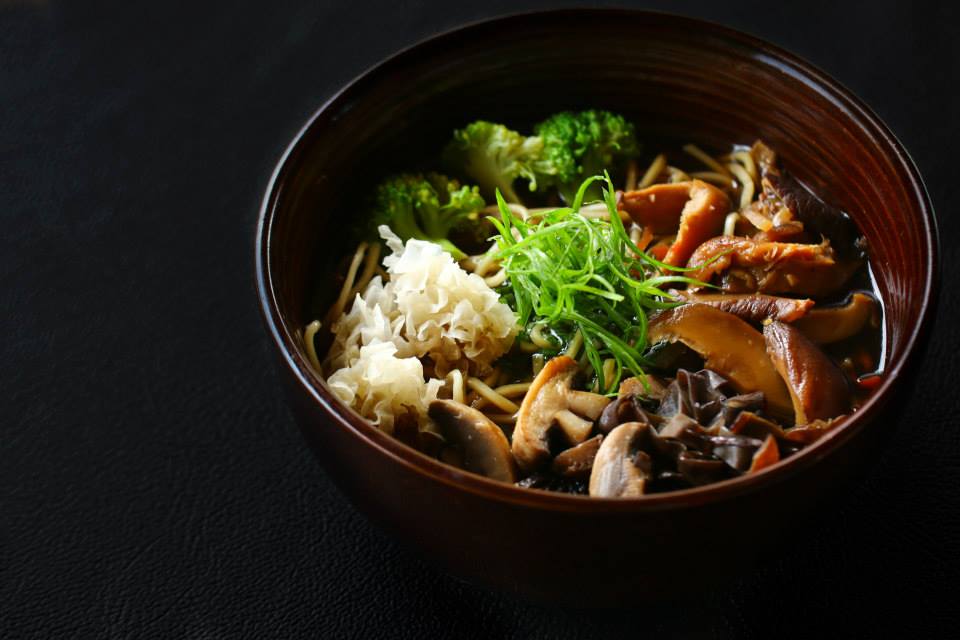
Looking into a bowl of hot ramen placed in front of you is like staring into a crystal ball, which gives you vision of the good fortune that’s about to come your way. Delhi’s, nay, the world’s love for ramen is not a new discovery, our childhood (cough, adulthood?) was spent devouring the quick fix cup noodles as a snack, as a meal, and everything in between! As we evolved, so did our experiments with ramen, and from a hot water + noodles mix it became a culinary adventure in its own right. Conquering territories beyond the steel pans of dhabas to the perfectly plated ramen burgers, this noodle soup has taken cue from its cousin Sushi, and moved beyond the tag of a ‘trend’, creating a permanent place for itself on Delhi’s menus.

Image: blueapron.com
Holding India’s culinary capital rapt with attention for over two years is no mean feat, and to get in on the secret of this success we got up on our feet to decode the basics that maketh ramen, and of course, that didn’t happen without discovering our favourite ramen places in the city!
The concept of a soup with noodles in it was borrowed by Japan from the Chinese, over the centuries it culminated into ramen- officially Japan’s greatest export to the world in the 20th century.
A bowl of this soupy goodness is made by bringing together its four pillars- noodles, broth, tare (pronounced as ta-re), and toppings. The broth is a blend of vegetables, chicken, seafood, and pork, and comes with ample playroom for including as many or as less of these ingredients. Typically, the noodles are thick & wavy, and made of wheat; however, few ramen-ya believe in mixing things up and serve it with an option of thin and straight ones too. While there’s no cap on the kind of toppings and their combinations that can ramen up your life, the cooks’ hands frequently reach out to a few, like roasted or braised pork, eggs, sprouts, seaweed, green onions, corn, fish, and butter. As for the tare, i.e., the seasoning that defines the type of soup base, each ramen bowl is made of one of the four varieties- miso, shio, shoyu, and tonkotsu.

Image: sbs.com
Tare aka Kaeshi is the essence of your noodle soup, it rests at the bottom of the bowl and lends a strong, salty tang to the dish. Each of the four categories of tare bring a distinct flavour to the noodle soup.
1. Miso: This fermented bean paste is offered in various shades of brown, and is one of the most popular type of ramen.
2. Shoyu: A soy sauce base, or as we call it, the answer to half of life’s questions! A clear broth carrying the colour of soy, it’s the most widely cooked up ramen story.
3. Shio: When there’s no Shoyu, it’s Shio to the rescue! Literally meaning ‘salt’, this base lacks Shoyu and is made by reducing salty ingredients high on the umami scale together, such as dried seaweed, seafood, pork etc.
4. Tonkotsu: Get ready for some pork-ception. This tare is made by boiling pork bones till they dissolve into a thick, creamy broth-add to that some pork toppings and you have a bowl of mini heaven!
The fundamentals were set. They’d tugged at the food lover in us, with images of ramen bowls floating in front of us, and we knew it was going to be a busy Sunday. Saying hello to the weekend, off we went for our ramen trail, i.e., a codeword for visiting all our fave ramen places in a single day.
The Fatty Bao

Fatty Bao
When we managed to get ‘em eyes off The Fatty Bao’s fun decor, we flipped through the menu to land on their selection of five kinds of ramen (each has a version of vegetarian, chicken, and seafood). The Asian bar threw us a tough one trying to pick a favourite, but upon much musing we ordered seconds of the Via Malaysia (coconut broth with kaffir lime leaves, chilli, garlic, lemongrass, galangal, and basil) and Chasu (pork stock with bacon, braised pork belly, bean sprouts, marinated soft boiled egg, and scallions).
Fuji

Image: angsarap.net
If there’s a mini Japan in Delhi, it has to be Fuji. Our go-to place for authentic Japanese fare categorises its ramen bowls according to their tares, whipping up three different kinds for each tare. Serving up some no-fuss ramen, they offer hot ramen cooled in chicken or pork and the tare of your choice. This comes with seaweed, welsh onions, boiled egg, and vegetables. We get our ramen fix from repeat orders of the Yasai Tonkotsu and Chicken Miso.
Guppy By Ai

Guppy By Ai
We love our restaurants offering a feast not only for the taste buds but for the eyes too! Another one with interiors quirky enough to be an experience in itself, Guppy acquainted us with the famous ramen burger. With mushroom, chicken, and pork burgers on the menu, they bring to the table some ace ramen in its other avatar. We do have a soft spot for their BBLT ramen burger, which comes with pork belly, bacon, cheese, sesame seeds, tomato, lettuce and mustard-miso sauce. Not ones to leave you high and dry, they serve some slurpy happiness in the form of Chashu Ramen-egg noodles in pork and soy/miso broth, slow cooked for 72 hours.
Stevie’s tip: Making ramen is not far removed from learning to play an instrument, once you have the basics down and proper, create your own compositions as you like! Here’s our never-fail recipe for cooking your own self-help bowl of Shoyu noodle soup.
Prep time: 30 minutes
Caters to: Four gobblers
Raid your larder of
For the broth:
2 cups of water
3 garlic cloves, chopped
3 cups of chicken stock
1 tsp worcestershire sauce
½ tsp Chinese five spice
4 tbsp soy sauce
2 slices of ginger
Pinch of chilli powder
1 tsp sugar
For the topping:
400g cooked pork or chicken breast, marinated in soy sauce & garlic, and sliced (skip this if making a vegetarian ramen, duh!)
375g ramen noodles
75g spinach leaves
4 tbsp corn kernels
2 hard boiled eggs, peeled and cut in half (optional)
For the garnish:
1 sheet of sliced nori seaweed paper (5 cm by ½ cm)
Green spring onions to taste, sliced
Sesame seeds to taste
Cook away:
1. Slice the pork or chicken, put it in a pan with 1 clove of garlic, sesame oil, soy sauce and fry.
2. In a separate bowl, boil water and let the ramen noodles cook in it. Strain after 5 minutes.
3. Take a large sauce pan and put the chicken/pork stock, 4 pieces of halved garlic cloves, ginger, five spice, chilli powder, worcestershire, and soy sauce in it.
4. Let this mix simmer for 5 minutes. Taste and add sugar or soy sauce depending on if it’s too salty or sweet for you.
5. Put the noodles in 4 separate bowls. Top each bowl with chicken/pork, half boiled egg, spinach leaves, and corn kernels.
6. Bring the stock in the saucepan to a boil once again and pour in into the bowls.
7. Sprinkle sesame seeds, green onions and nori paper on top. Preferably let the spinach wilt a little before digging in.
Make this for your mates and you’ll be the ‘top’ ramen they gush about. Now bring out the chopsticks and slurp away!
Featured Image Courtesy: teafortammi.com

